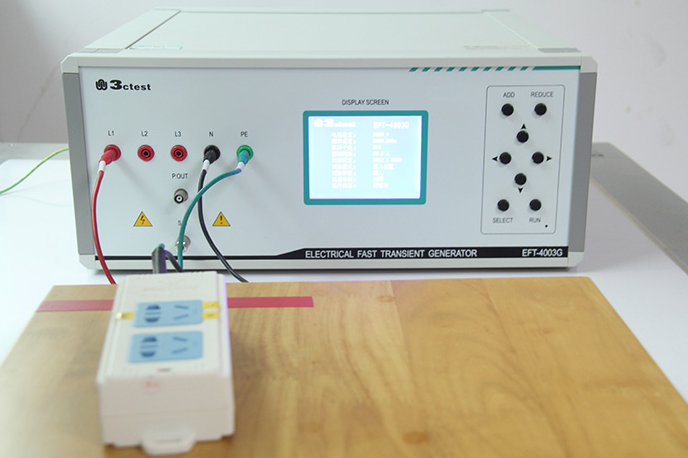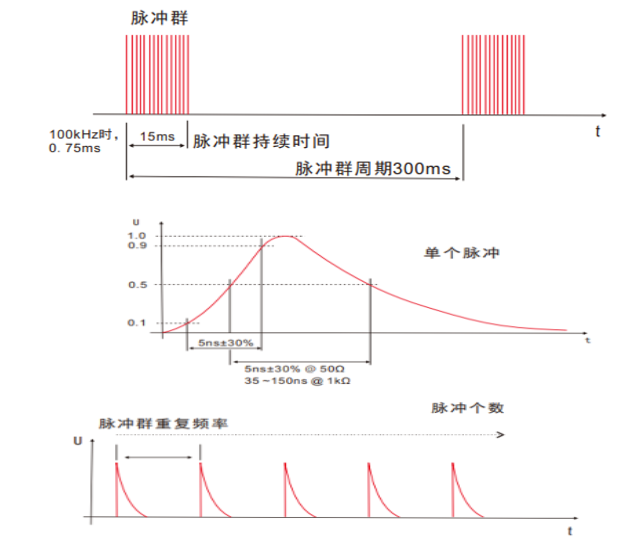Purpose
The purpose of the EFT test is to verify the anti-interference ability of the mechanical switch of the electronic equipment to the transient disturbances caused by inductive load switching, relay contact bounce, high-voltage switch switching, etc. This test method is a pulse group test composed of many fast transient pulses coupled to the power line, control line, and signal line. Occasions where problems are prone to occur include power equipment or equipment for monitoring the power grid, equipment used in industrial automation, medical monitoring and other equipment for detecting weak signals. In order to evaluate the level of immunity to electrical fast transient pulse groups of electronic products, it is generally necessary to conduct fast transient pulse group immunity tests. The electrical fast transient pulse group generator is the main equipment in the pulse group immunity test.

Characteristics of EFT experiment
The characteristics of EFT are fast rise time, short duration, low energy, but high repetition frequency. EFT generally does not cause damage to equipment, but due to its wide interference spectrum distribution, it will affect the normal operation of the equipment. Its interference mechanism is that EFT continuously charges and accumulates the semiconductor junction capacitance in the circuit in one direction, causing malfunction of the circuit and even the equipment.
1) Electrical fast transient pulse group test and related requirements
Different electronic and electrical product standards have different requirements for EFT immunity tests, but most of these standards directly or indirectly refer to GB/T17626.4, the basic electromagnetic compatibility standard, and conduct tests according to the test methods therein. The following is a brief introduction to the content of this standard.
2) Signal generator and test waveform
a) Signal generator
Among them, U is a high-voltage DC power supply, Rc is a charging resistor, Cc is an energy storage capacitor, Rs is an internal discharge resistor, Rm is an impedance matching resistor, Cd is a DC blocking capacitor, and R0 is an external load resistor. The size of Cc determines the energy of a single pulse, and the combination of Cc and Rs determines the shape of the pulse wave (especially the duration of the pulse). Rm determines the output impedance of the pulse group generator (the standard stipulates that it is 50Ω), and Cd isolates the DC component in the output waveform of the pulse group generator, eliminating the influence of the load on the operation of the pulse group generator.

b)Experimental waveform
There are three main indicators of the test generator performance: single pulse waveform, pulse repetition frequency and output voltage peak. IEC 61000-4-4 requires that the test generator output waveform should be as shown in the figure.

EFT is composed of continuous pulse trains with an interval of 300ms, each pulse train lasts 15ms, and the pulse waveform consists of a single pulse with a rising edge of 5ns, a duration of 50ns, and a repetition frequency of 5kHz and 100kHz. In order to ensure that the energy injected by 5kHz and 100kHz is equivalent, when the repetition frequency of 100kHz is used instead of 5kHz, the duration of EFT is reduced from 15ms to 0.75ms. Traditionally, a repetition frequency of 5kHz is used, but 100kHz is closer to the actual situation. In terms of electricity, 100kHz is generally required.